The Irish love poking fun. Nowhere is that more apparent than a look at the many Dublin statues and monuments whose names have been given a little dose of Irish humour. So engrained into local culture have the nicknames become, that some might be hard pressed to remember their real names!
So grab your walking shoes and sense of humour, and come with us on a stroll around some of Dublin’s nicknamed landmarks.
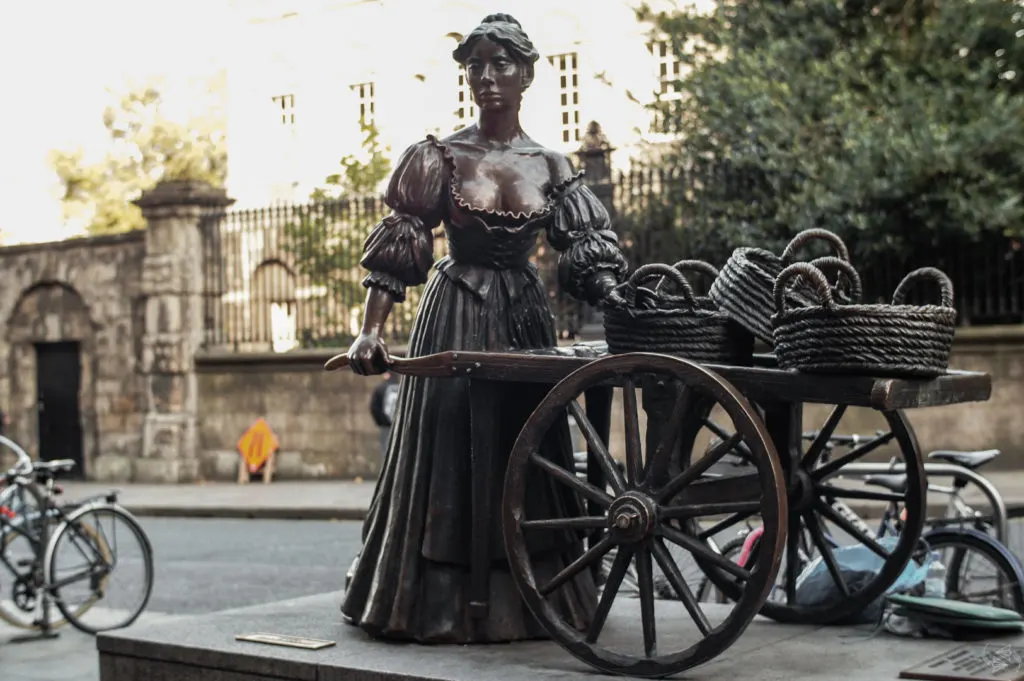
Table of Contents
Molly Malone Statue
This bronze statue of Molly Malone is a visual representation of the popular song of the same name which tells of a beautiful fishmonger who walked the streets selling her trade. She is typically represented as a trader by day and prostitute by night.
Set in Dublin, the song has become the unofficial anthem of the city. While there is no solid evidence to suggest the song is based on a real woman, the Dublin Millennium Commission did endorse claims of a connection to a Molly Malone who died on 13 June 1699, and subsequently declared June 13th “Molly Malone Day.”
Officially unveiled in 1988, the, um, well-endowed depiction of the woman has become locally known by many a nickname: The Tart with the Cart, The Dish with the Fish, The Dolly with the Trolley, The Trollop with the Scallop and The Flirt in the Skirt.
Location: Corner of Grafton/Suffolk Streets.
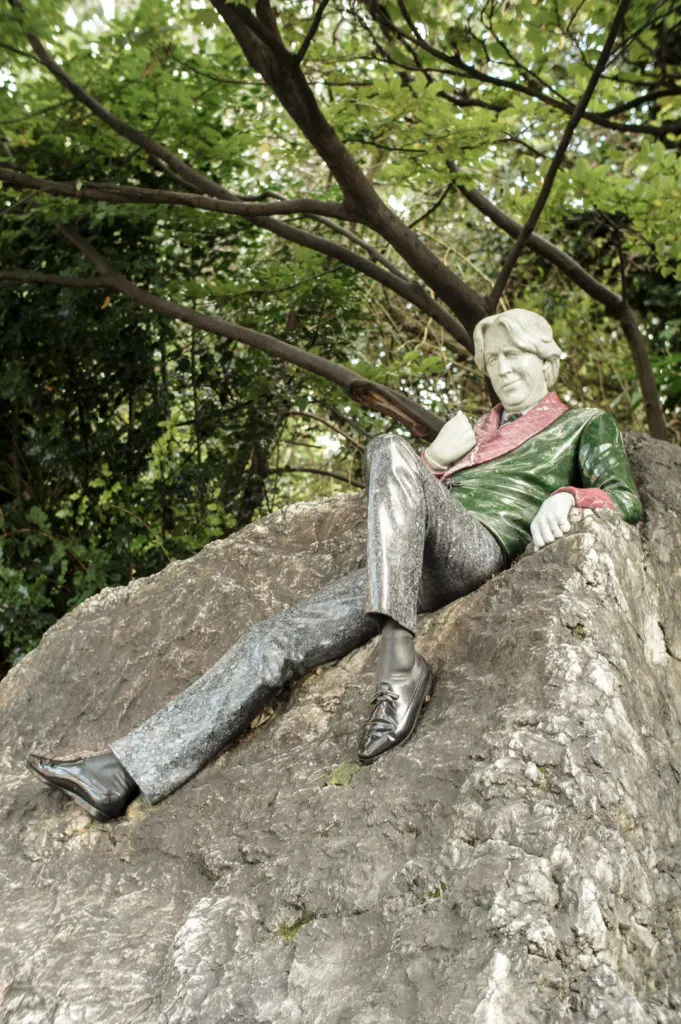
Oscar Wilde Statue
This statue of famous Irish poet, writer and playwright Oscar Wilde perched on a rock in Merrion’s Square Park is colloquially referred to by several references to his homosexuality: The Fag on the Crag, The Queer with the Leer and The Quare in the Square.
Location: Northwest of Merrion Square Park.
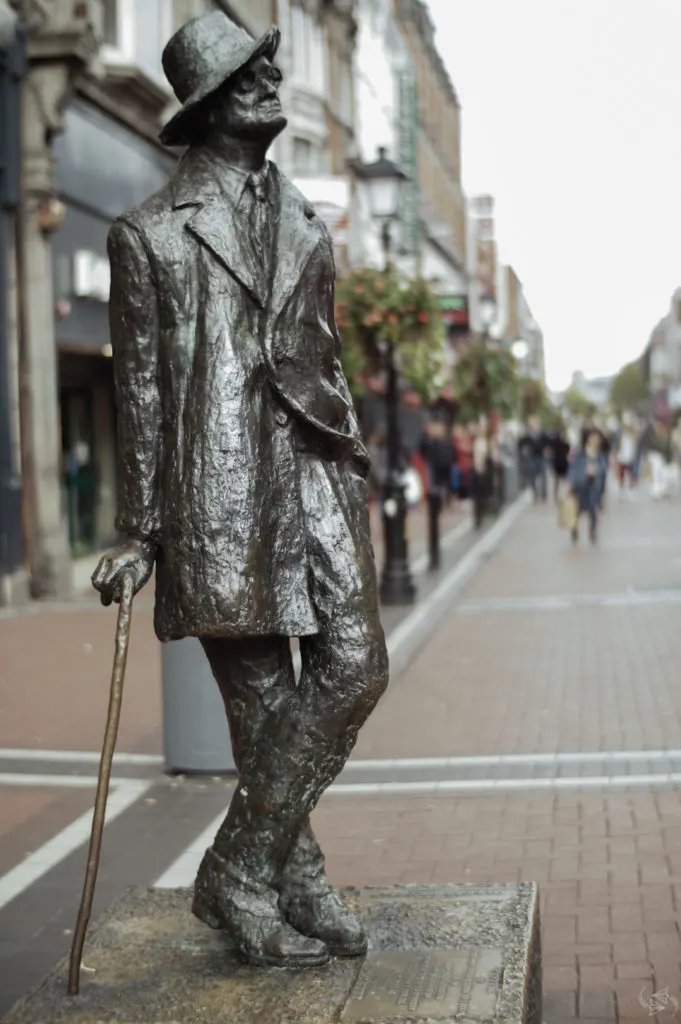
James Joyce Statue
Considered one of the most influential writers of the early 20th Century, Irish novelist and poet James Joyce takes his rightful place on Dublin’s streets with this statue just off the main thoroughfare of O’Connell Street.
Best known for his book Ulysses, his statue is better known as The Prick with the Stick.
Location: North Earl Street, near the Spire.
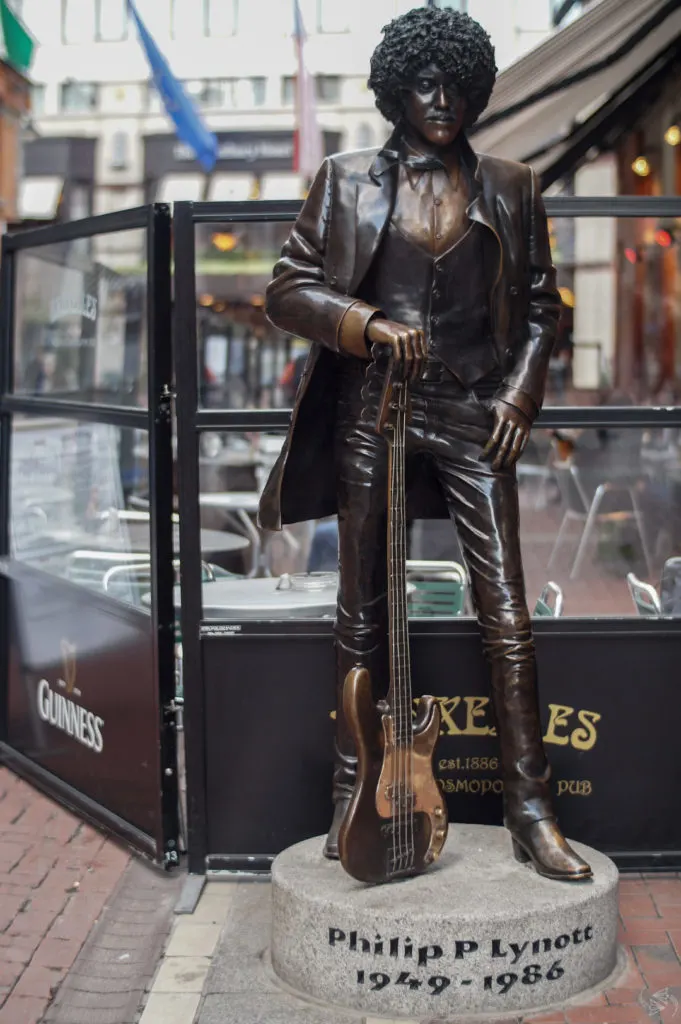
Phil Lynott Statue
While not as contentiously nicknamed as some of Dublin’s other street art, the statue of Irish singer and musician Phil Lynott, who came to fame as the front-man of band Thin Lizzy, recognizes his contribution to music.
After dying at the young age of 36 from complications arising from his drug dependency, the Irish rocker remained an important figure in the music industry and can now be publicly honoured with this permanent symbol of remembrance, referred to locally as The Ace with the Bass.
Location: Harry Street, off Grafton.
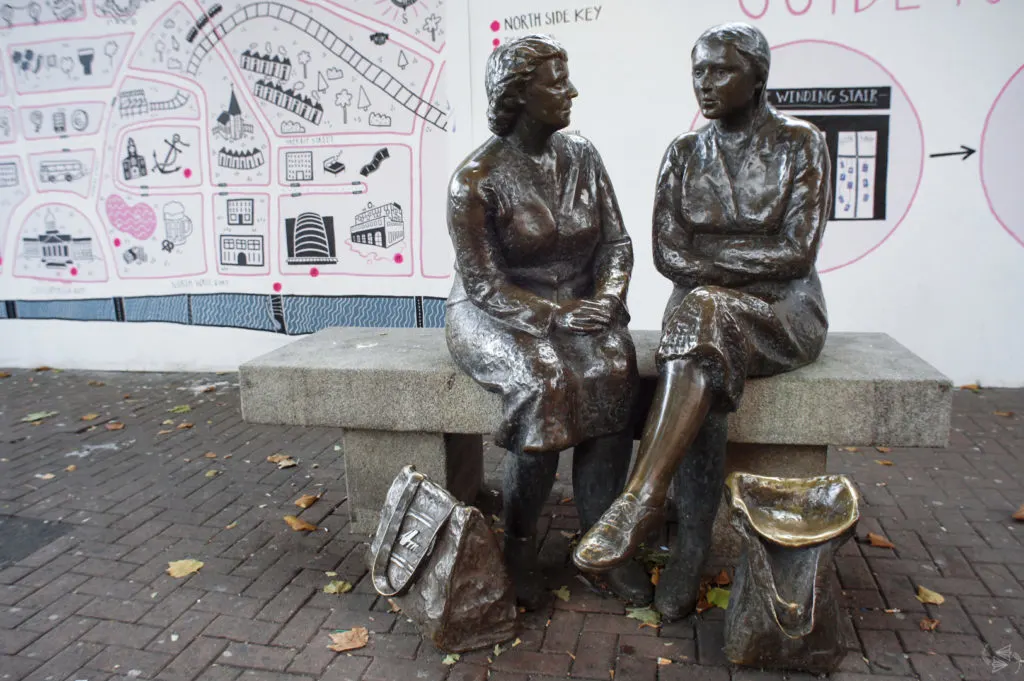
The Hags with the Bags
Just over Dublin’s famous Ha’penny Bridge, passersby can find one of the most well-known Dublin statues, that of two women engaged in conversation with their shopping bags at their feet.
This Dublin statue was erected as part of a project for Dublin’s millennium in 1988 to celebrate the “ordinary women” of the city. What do locals call it today? The Hags with the Bags!
Location: Lower Liffey Street.

The Dublin Spire
You can’t miss this 121.2 metre (398 ft) pin-like monument in the middle of O’Connell Street. Completed in 2003, the monument replaced the former Nelson’s Pillar blown up by former IRA members in 1966, in an effort to re-design the declining thoroughfare at the turn of the millennium.
Playing on this contrast between the new and the old, locals began referring to it as The Stiletto in the Ghetto. And its size and shape lended nicely to some dirtier digs like The Erection at the Intersection and The Stiffy at the Liffey.
Location: O’Connell Street.
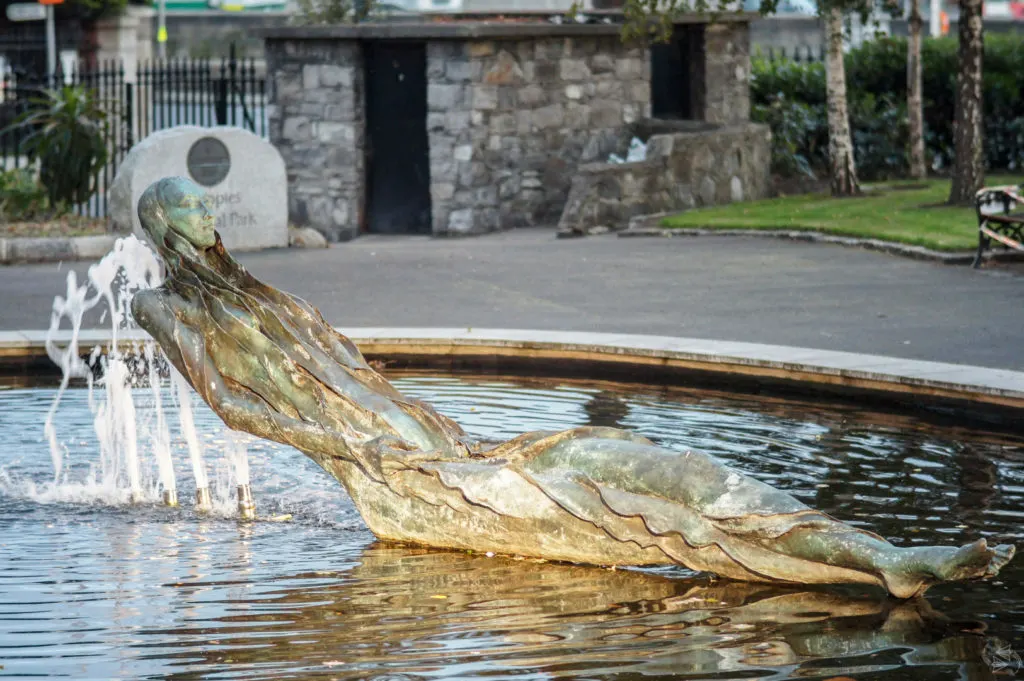
Anna Livia Statue
Anna Livia was the name of a character in James Joyce’s final work Finnegans Wake. Just as in the book, the statue of Anna Livia was constructed to represent her as the personification of the River Liffey that runs through the heart of Dublin.
The Anna Livia Statue used to stand on O’Connell Street where she could be seen laying back on a slope with water cascading over her. The bath-like monument lead the way to my personal favourite nickname of all: The Floozie in the Jacuzzi!
The site of many a bubble bath prank over the years, Floozie was moved to make way for the Spire. She reappeared rather less interestingly and more uncomfortably positioned in 2011 in this small park fountain on the outskirts of the city centre. What else do they call her? This one requires an adoption of the Irish accent to create a rhyming effect: The Whore (hooer) in the Sewer. Poor Anna!
Location: Croppies Memorial Park by the Liffey.
Dublin statues on your travel itinerary?
Have you been to these or other nicknamed Dublin statues? Does your city have alternative, local names for some of its landmarks?
Visiting Dublin in October? Check out the Bram Stoker Festival for all the Halloween fun.

Nick Kearns
Thursday 4th of February 2021
The Spire sometimes called 'The Spire in the Mire' And there once was a giant clock in the river Liffey, that could be viewed from O'Connell St Bridge. Didn't last long. But it did pick up the nickname 'The Chime in the Slime'....
Jim “I wish I was Irish” Dewey
Monday 23rd of November 2020
Another few names I learned of the spire today watching a travel doc called “Footloose in Ireland: Dingle Way & Dublin” the tour host also mentioned “the Rod to God” and “the Pole in the Hole”. It would seem it’s simply a matter of coming up with an appropriate rhyme to fit the subject.
Jessica Korteman
Saturday 2nd of January 2021
Hi Jim, it could really be endless, couldn't it?! Thanks for chiming in and sharing these other nicknames for the Dublin Spire.
Dublin Gay Guide Shows Stiffy at the Liffey - LGBT Cruise Travel
Wednesday 10th of August 2016
[…] Spire of Dublin rising 120 meters (nearly 400 feet) built for the millennium. Tonie explained that Dubliners have a penchant for affectionately nicknaming statues and monuments. The spire has been dubbed “Stiffy at the Liffey” as well as “Stilletto in the […]
Marion
Saturday 3rd of October 2015
Just to add one more. the Tram system that runs through Dublin is officially know as the LUAS (Light Urban Access System), but is nicknamed the Daniel Day (luas)
Jessica Korteman
Tuesday 6th of October 2015
Oh my gosh! LOVE this so much! Thank you for sharing :)
Les Petits Pas de Juls
Wednesday 6th of November 2013
Oh how fun! and what interesting stories about them all statues! Great job getting us curious about the city once more! ;-)